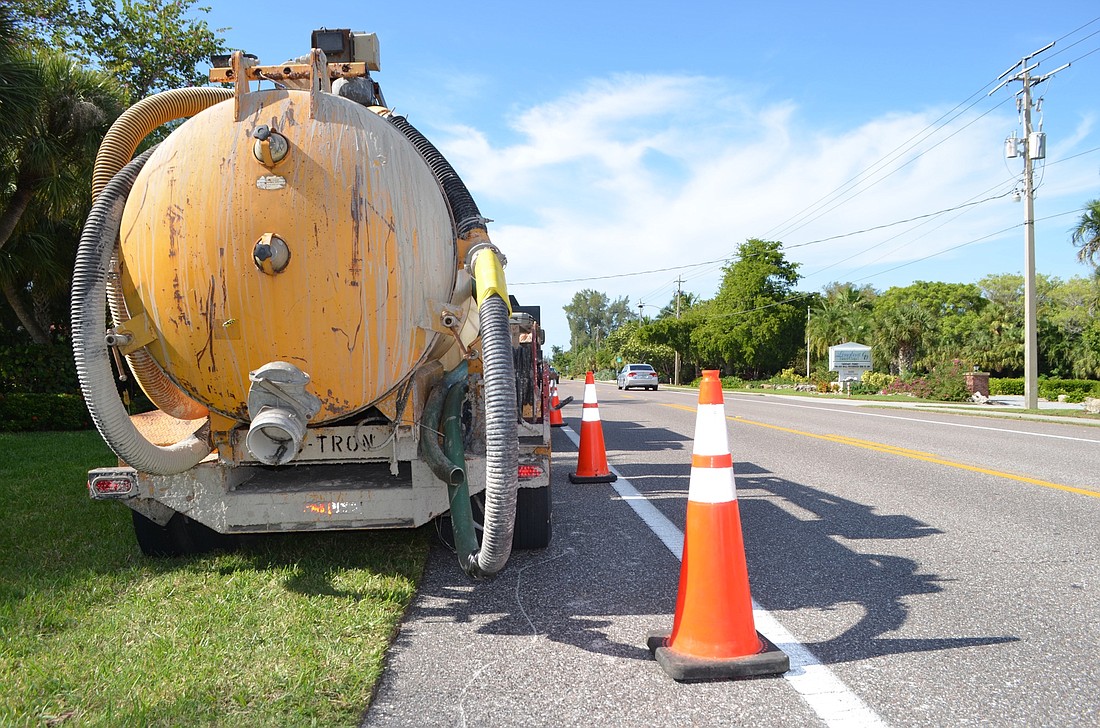- April 19, 2024
-
-
Loading

Loading

It’s hard to drive any distance in Longboat Key without slowing for a roadside work zone. And more than likely, those zones are occupied by crews advancing the town’s $49.1 million project to bury electrical and communications cables, an effort that began in July but has its origins with voter approvals in 2015.
Most of the initial work in the project’s first two phases has been focused along the west side of Gulf of Mexico Drive, but as the next few weeks progress and a third phase nears launch, decisions will be made to possibly begin pushing into the first neighborhoods. Some of that might depend upon the logistics of operating in the neighborhoods when the town population reaches its seasonal peak.
Originally envisioned to take five years, the underground utilities project is on pace to wrap up by 2022. The project is among the state's biggest underground utility conversions ever.
The Longboat Observer sat down with the town’s Public Works Department project manager James Linkogle and consultant Mark Porter to talk about the project, what residents can expect to see and how an undertaking such as this moves from beginning to end.
First working from the south end of the island to Potter Lane, then working from the north end of the island to Dream Island Road, crews from contractor Wilco Electrical began with boring machines and 10-foot tall reels of six-inch tubing – called conduit.
Along Gulf of Mexico Drive, this conduit is built to hold three power cables, each designed to deliver electricity along the primary feeder network up and down the island's main road. Those cables are now in the process of being pulled through the underground conduit on the south end in preparation to be connected to switching devices, transformers and other facilities. Workers on the north end started a few weeks later and are wrapping up conduit work with cable pulling to begin soon.
Concrete pads for electrical equipment have been placed around town, and conduit and cables have been bored under GMD from west to east to facilitate further connections. It's from those spots that electrical cable will fan out into neighboring side streets and ultimately be connected to every home and business on the island.
As the Phase One work along GMD comes to completion and Phase Two work proceeds, project managers will soon have a decision to make on where to work next. Porter said a few variables will influence that decision, which will be likely made in the next few weeks and could lead to neighborhood work late in 2019 or in early 2020.
Among the variables:
"There's lots of parts and pieces as to how that can happen,'' Potter said.
The town wants to work just once in the neighborhoods, boring for FPL and communications services at the same time to avoid disruption. If the Phase Three design is ready to go, it's possible work would continue along Gulf of Mexico Drive, leaving the neighborhood work until later in the new year, when fewer people might be around. At that point, parallel boring projects would proceed, because power lines must be separated from other cables. If the Phase Three design can't begin promptly, Linkogle said, work might begin in neighborhoods sooner. "We'll be mindful of the impacts,'' Porter said.
"If we are going to go into the neighborhoods, we will definitely let those local residents know where we're going and when,'' Linkogle said.
Typically, along the side of the road, you’ll see a drill/boring machine and an accompanying truck with a large tank on the back. Linkogle explained that a mixture of water and bentonite (a sand and clay blend) are used as a lubricant as the drill bores three to eight feet below the surface and as far as 400 feet away. From there, the conduit is pulled through in intervals of 400 feet or less. The tank truck serves to vacuum up the bentonite mixture or groundwater that seeps in from the island’s high water table or rainy weather.
Linkogle said considering the distances, the project is within the tolerances of underground utilities work in terms of avoiding existing underground facilities.
"Nothing is perfect work,'' he said. "That's some of the reason we've had a couple hits on utilities because you're doing the best you can to locate it as reasonably close to not only vertical but horizontal depths, so all of those issues come into play when you're boring, but you can make mistakes. It's a complicated thing. you're trying to miss everything and you could hit something else. Sometimes the locates are farther off, you may be 10 feet away and you might find out we're hitting something that was mismarked or overlooked. Sometimes that happens."
The town recently ended a Request for Proposal to form a public-private partnership to build a smart streetlight system, along with fiber to the home services. After nearly a year of negotiation, which resulted in an interim agreement with Waterleaf International LLC, the town took ownership of a fiber-optic design for the town, which it will direct Wilco Electrical LLC to proceed with to connect town facilities as part of a first step. Wilco will also complete the design-build of smart-capable street lights along GMD and in the neighborhoods. Multi-purpose trail lighting options and plans will also be examined.